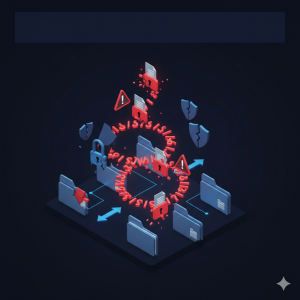The moment a company decides to run its finance, logistics or human-resources data on SAP, it gains a powerhouse of efficiency - but it also inherits a huge new attack surface. Criminals know that compromising a single SAP instance can open the doors to payroll files, trade secrets and even industrial production lines. As a result, organisations are racing to develop in-house talent that truly understands how to defend these mission-critical platforms. That is where SAP security training enters the picture.
What is SAP security training?
At its core, SAP security training is an immersive learning journey that shows IT professionals how to keep an SAP landscape trustworthy, compliant and resilient. Unlike a generic cybersecurity course, this programme dives into the inner workings of SAP NetWeaver, S/4HANA and the many satellite systems that orbit them.
Participants learn why authorisation objects matter, how segregation-of-duties conflicts arise, and what tools - such as SAP Identity Management or SAP GRC - exist to detect misuse. The training pairs textbook concepts with hands-on labs, so students practise building secure roles, hardening system parameters and auditing logs in live sandboxes that mimic real enterprise environments. By the end, they can spot vulnerabilities before attackers do and prove to auditors that every control is in place.
Why the discipline emerged
Fifteen years ago, an SAP Basis administrator who could set up profiles and change passwords was viewed as “secure enough.” The threat landscape has since transformed. Ransomware groups trade exploits for SAP Message Server ports; privacy regulations levy multimillion-euro fines for a single leaked customer record; and cloud migrations create hybrid architectures that multiply risk. Boards now demand specialists who grasp both SAP’s proprietary mechanics and the broader principles of information security. Formal training programmes grew out of that demand, giving professionals a structured path to mastery instead of relying on scattered manuals and tribal knowledge.
Inside the training room
A typical curriculum starts with the anatomy of an SAP system landscape - development, quality assurance, production and the transport routes that connect them - because one weak link can compromise them all.
From there, instructors move on to user administration, showing how to manage identities across on-premise and cloud tenants while enforcing password, certificate and Single Sign-On policies. The heart of the course is authorisation design: crafting roles that grant exactly the activities a given job needs, nothing more.
- Students experiment with the Profile Generator, trace logs to understand what an end user really executes, and then simulate SoD checks to make sure two conflicting duties never meet in the same account.
- Modern courses also weave in topics that go beyond classic ABAP stacks - secure HTTP gateways for Fiori apps, encryption options for HANA databases, and the way SAP’s Business Technology Platform integrates with Azure or AWS.
Learning formats that fit real life
Because most learners already hold demanding day jobs, providers offer a blend of delivery methods. Some prefer instructor-led sessions in dedicated labs, where white-board debates can run late into the evening. Others connect through live virtual classrooms, spinning up cloud-based SAP images that everyone can access from a laptop at home.
Self-paced video modules often supplement both formats, letting students revisit tricky topics such as RFC gateway security or parameter. Whatever the medium, the hallmark of quality training is the opportunity to “break and fix” a system safely, reinforcing theory through muscle memory.
Certification and recognition
Completing the course usually positions a participant to sit for the SAP Certified Technology Associate exam in system security or GRC. Passing signals to employers that the holder can protect production landscapes, guide audits and map regulatory frameworks like GDPR or SOX onto SAP technical controls.
Many graduates go on to pursue broader designations - CISSP, CISM, CRISC - that complement their SAP-specific badge and pave the way into senior architecture or risk-management roles.
Career impact
Companies pay a premium for people who can translate a security policy into a working PFCG role menu or trace an unauthorised table read back to a rogue RFC destination. Salaries reflect that scarcity: in competitive markets, an SAP security consultant can earn more than generalist security peers with similar experience.
The role is also future-proof. As SAP customers move to S/4HANA Cloud, they need professionals who understand not only traditional on-premise hardening but also the shared-responsibility model of SaaS, the nuances of cloud identity federation and the specifics of HANA native encryption. Continuous retraining therefore becomes part of the job description, and reputable training providers keep curricula refreshed to cover each new release.
A strategic investment
For an organisation, sponsoring an employee through SAP security training is cheaper than breaching statutory data, losing operational uptime or paying an external incident-response team. For the individual, the programme offers a roadmap into a niche where technical depth and business relevance intersect. Few fields allow an engineer to discuss ABAP kernel patches in the morning and advise the CFO on compliance exposure in the afternoon. SAP security does.
In short, SAP security training is not merely another elective in the crowded cybersecurity marketplace. It is a focused, practice-oriented education that turns an IT professional into a guardian of the digital backbone powering today’s enterprises. As threats escalate and regulations tighten, that expertise becomes indispensable - and those who acquire it secure both the systems they protect and their own professional futures.






